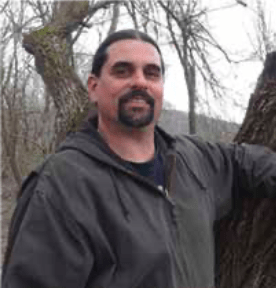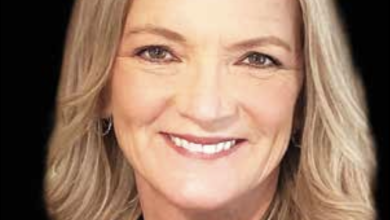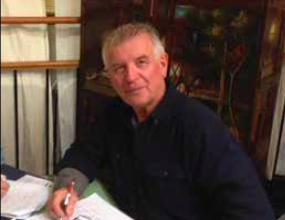Local Spotlight: Getting to Know Marko Bey On the Frontlines of Forest Stewardship in Times of Climate Crisis
 By Jordan Pease – June 2022 Issue of LocalsGuide Magazine– Ashland, Oregon
By Jordan Pease – June 2022 Issue of LocalsGuide Magazine– Ashland, Oregon
Lomakatsi is a Hopi Indian term meaning ‘life in balance.’ Since 1995, the Ashland-based Lomakatsi Restoration Project has successfully implemented diverse and carefully-designed restoration projects across thousands of acres of forests and miles of streams in Oregon and Northern California. In cooperation with a broad range of partners, their work has set precedents on nationally recognized projects.
Here, Executive Director Marko Bey shares about himself and his passion, managing his nonprofit and the scores of employees working hard out in the deep, remote forests of the Northwest, protecting the delicate and threatened ecosystems so vital to our region.
Please tell your “how I got to Ashland” story. I moved from the East Coast out West in 1987 to do conservation and restoration work as part of a reforestation program. Starting in the San Francisco Bay Area, some friends and I took a trip north to Oregon, my first time in the state. I remember coming over the Siskiyou Mountains with the sunrise, winding down I-5 into the Bear Creek Valley, and being completely taken aback by the mountains, clouds, and breathtaking beauty all around.
The rented house we stayed in on Morton Street turned out to be owned by my crew boss for the reforestation program; such is the serendipity of Ashland. That first coincidence was indicative of the small-town atmosphere that welcomed me, and the magic that just seems to happen in this community. More than thirty years later, I’m a grandfather with children and grandchildren who went through our local schools and value the beauty of this place now too.
Lomakatsi was originally about restoring salmon habitat. Please explain how the organization has expanded. In the late 1980s, we were in a very difficult era of polarization known as the Timber Wars, when clear cutting and industrial logging in headwaters degraded salmon habitat and caused a division of “jobs versus owls.” In the 1990s, many species of salmon were listed as endangered, leading to the Oregon Plan for Salmon and Watersheds in 1997. The Oregon Watershed Enhancement Board established opportunities to fund restoration through watershed councils, and spurred a movement to restore salmon habitat, mainly on private lands where some of the best spawning habitat could be found. The conservation movement started to focus on this riparian restoration while environmental groups tried to shut down logging due to the impacts on salmon and Northern Spotted Owl. These species came forward as a warning, an indication that we had gone too far.
Before Lomakatsi, I worked as a lead crew member for a reforestation company on Oak Street called Flowing Sap Reforestation that led a large riparian restoration project in the Applegate Valley. We planted a diversity of species along many tributaries to the Applegate River. Lomakatsi came from the inspiration of working on these ecological projects that demonstrated good work with private landowners, the efficacy of partnerships, and the impact of bringing resources to accomplish the work.
The 1997 floods in Southern Oregon significantly impacted both our community and riparian habitat, and landowners started calling on Lomakatsi for help with revegetation. We planted a variety of species that provided soil stabilization and hazard mitigation to protect and restore fish habitat. This evolved into upland restoration, and all manner of restoration activities from the top of the ridgeline to the valley floor. Starting with a small staff and lots of volunteerism, we were funded to replant a one-square-mile clear cut about 14 miles outside of Ashland. We grew with some large-scale projects, started receiving recognition for the work, and began mobilizing a multicultural workforce to address hazardous problems through an ecological forestry approach, meanwhile seeding ideals of equity and tribal engagement into Lomakatsi’s early years. The scope of our forest and watershed restoration grew from the Bear Creek Valley across Oregon and Northern California into the ten counties where we currently work: with a focus on Jackson, Josephine, Klamath, Shasta, and Modoc counties.
Talk about the four areas of influence that Lomakatsi focuses on. Ecosystem restoration: Restoring habitats that have been degraded, damaged, or destroyed. This branch of our work is rooted in hands on the land. Our team of scientists and ecologists, in collaboration with our many partners, develops ecosystem restoration plans and prescriptions, and our workforce implements the specified actions on the landscape. Lomakatsi ecosystem restoration covers forests, watersheds, oak woodlands, juniper sage steppe habitats and riparian streamsides from the Siskiyous and the Klamath, to the Cascades and the Warner Mountains.
Partnerships: with tribal nations, agencies, nonprofits, philanthropic sources, educational institutions, industry, businesses, and individuals: It takes a village to restore an ecosystem. Lomakatsi stands front and center in building and participating in partnerships and maintaining collaborations like the Rogue Forest Partners, Klamath-Siskiyou Oak Network, Bear Creek Watershed Restoration Initiative, Inter-Tribal Ecosystem Restoration Partnership, and Western Klamath Restoration Partnership.
Building relationships, forming agreements with tribes, federal and state agencies, and establishing governance charters to collaboratively work on restoring the land is a major part of what we do.
Education and training: Outreach, education about ecosystem restoration, workforce development, and formal training to build capacity in the emerging restoration economy. We have developed a nationally recognized model for engaging local youth in ecological restoration, and we offer workforce training opportunities for young adults that provides the certifications, skills, and experience needed for entry level careers in restoration and natural resources.
Diversity, equity, and inclusion is layered into all of Lomakatsi’s initiatives. Our Promotora Program for forest workers’ health and safety aims to raise the bar for people in the forestry sector to see better pay and better treatment. Our Tribal Partnerships Program elevates each place-based partner for the long-term, integrating the unique skills and abilities that Tribal Nations and communities bring, and coalescing into our ecocultural restoration approach. We have 15 tribal members on staff and we’re growing.
How has the drought and increasing threat of wildfire impacted Lomakatsi’s work? Ongoing drought and the increasing threat of wildfire have increased our work, so we’re scaling up. We’re seeing fires like we have never seen before, which burn thousands to millions of acres each year, and sometimes take down entire communities. Climate change impacts are rapidly shifting conditions of forests, moisture, and water availability. These realities created a huge demand for our services. As a nonprofit organization, we are being called on by agencies, tribes and partners who value our track record and ability to accomplish necessary large-scale projects. In a collaborative partnership, we recently completed the Ashland Forest Resiliency Stewardship Project across 13,000 acres (now in the maintenance phase), and are expanding landscape-scale restoration efforts through Rogue Forest Partners, West Bear All-Lands Restoration Project (a 27,000-acre area), and other projects like the Pine Springs Habitat Restoration Project working to restore forests and ecocultural resources across 20,000 acres in partnership with the Kosealekte Band of the Ajumawi/Atsuge Nation (Pit River Tribe).
The path to resilient ecosystems requires a lot of attention, and is increasing the need to hire, train and deploy more people in ecological forestry. There’s also a first responder reality around wildland fire suppression. Although long-term, that’s not the solution. We have to protect our towns. It’s a combination of trauma-informed emergency response and proactive mitigation; the ecosystem restoration work we do in the shoulder seasons. We now have 80 full-time employees, an additional 100 seasonal employees, and other workforces and partners employed through sub-awards and contracts.
We also have these departed ecosystems, where drought and intense fire can destroy cultural trust resources upon which tribes depend, and important habitats that host threatened species like spotted owl, sage grouse, Pacific fisher, and salmon. In addition to protecting communities, our services are in demand to protect biological hotspots through forest restoration efforts.
Please tell us about a hero or mentor who has influenced you. Someone I consider a major influence on myself and Lomakatsi as an organization is Dennis Martinez, a descendant of the Tohono O’odham Nation. He’s an ecologist, ecocultural specialist, and Chair of the Indigenous Peoples’ Restoration Network of the Society of Ecological Restoration International.
I was fortunate to meet Dennis in the early 1990s in the Applegate Valley. He brought tribal ecological knowledge to the forefront of restoration practice and ecology. While Dennis lived locally, I learned a great deal from him about cultural fire and ecosystem restoration in an indigenous restoration context. He was a personal mentor and influence on Lomakatsi’s foundation related to tribal engagement and practices on the land. He provided training on these subjects for our core staff in the late 1990s and early 2000s, offering significant knowledge and insight into how to accomplish this great work, and setting the direction of our organization.
What are the qualities of the Ashland community that you appreciate most? Ashland welcomed me from the minute I arrived. I value the people and the place. It’s close to the foothills, and all the natural settings surrounding us here. There is open critical thinking in this community, diverse perspectives, ecological conscientiousness, and deep care about the forests and ecosystems. And it was a relatively safe place to raise my family too.
Lomakatsi’s success was born from the community’s support for a model of community-based ecosystem restoration, diversity, equity and inclusion, and workforce development. The strength of our organization’s roots was made possible by the open nature of this community following an intense period of polarization, and it was that forward-thinking ‘radical middle’ that brought solutions to the table.
Please fill in the blank: “I’m having the time of my life when I’m [blank].” I’m having the time of my life when I’m out on the land in an extremely remote place, hiking off trail, steep and deep in a natural place that has a lot of biological diversity.
What advice do you have for the young people in our community? My advice is to leave the tablets and computers behind as much as possible (even though they are important tools) and get outside. There is incredible beauty out there, go explore it. Go to the places no one else goes, take some time to connect with the natural world, sit near a river, push yourself and go somewhere new, and get to know the foods that come from the land around you. Most importantly, care for the land and care for each other.
LEARN MORE: www.lomakatsi.org
Jordan Pease is a 20-year resident of Ashland and Founder/Director of Rogue Valley Metaphysical Library and Media Exchange. www.RVML.org




